Every year, the Vuelta a España shines a light on the diverse terrain found in Spain – with the country's climbs taking centre stage.
"The Vuelta is all about crazy mountaintop finishes, sometimes as many as eight per race, and each year it seems to find more outlandish roads up which to send the peloton," writes Simon Warren, author of the book, 100 Great Cycling Climbs of Spain.
Indeed, Spain is the focus of the latest book in Simon's 100 Climbs series, which started by showcasing the best ascents in the UK, before moving on to France, Italy, Belgium and more in a series now spanning 14 books.
The latest book covers climbs across seven chapters: Mallorca, Northern Spain, Cataluña, Valencia, Sistema Central, Andalucia and the Canary Islands.
"In the 12 years I’ve been making these guides, I’ve never been more excited to release a book," continues Simon.
"There are so many amazing roads in here, so many classic ascents that will delight, amaze and, at times, outright terrify you.
"In previous books, I have usually singled out one climb that stands above all others and rewarded it with a Spinal Tap-esque 11/10, but in this book there are THREE! That’s right, three, roads so off the charts that you simply have to see them to believe them."
For the latest episode of the BikeRadar Podcast, Simon picks out six must-ride climbs from the 100 found in his book.
From the highest road in Europe to detours to Mallorca and the Canary Islands, the author takes listeners on a whistlestop tour of Spain's greatest ascents.
You can listen to the podcast above or read on for the six entries from Simon's book.
You can also purchase a signed 100 Great Cycling Climbs of Spain: A Guide to the Famous Cycling Mountains of Mainland Spain, Mallorca and the Canary Islands from 100climbs.com.
1) Alto de l'Angliru, Northern Spain

I first rode this beast in the autumn of 2014. Full of bravado, I hit its slopes armed with a 39 at the front and a 28 at the back and it duly pulled my pants down and spanked me. Never before had I been beaten by a mountain and had to do the walk of shame, but never before had I come up against a foe as mighty as the Angliru.
Leaving La Vega, the first few kilometres are relatively tame, and they are followed by a short levelling and descent. Following this, however, the madness begins. Hitting you in waves, the sections of stupid-steep 20 per cent plus gradient suck the very marrow out of your bones.
One of these savage stretches of gradient you could cope with, it’s just all of them added together that keeps punching you until you can’t take any more. Each vicious section has a name, such as Les Picones, Cobayos or El Aviru, and, the worst of the lot, Cueña les Cabres.
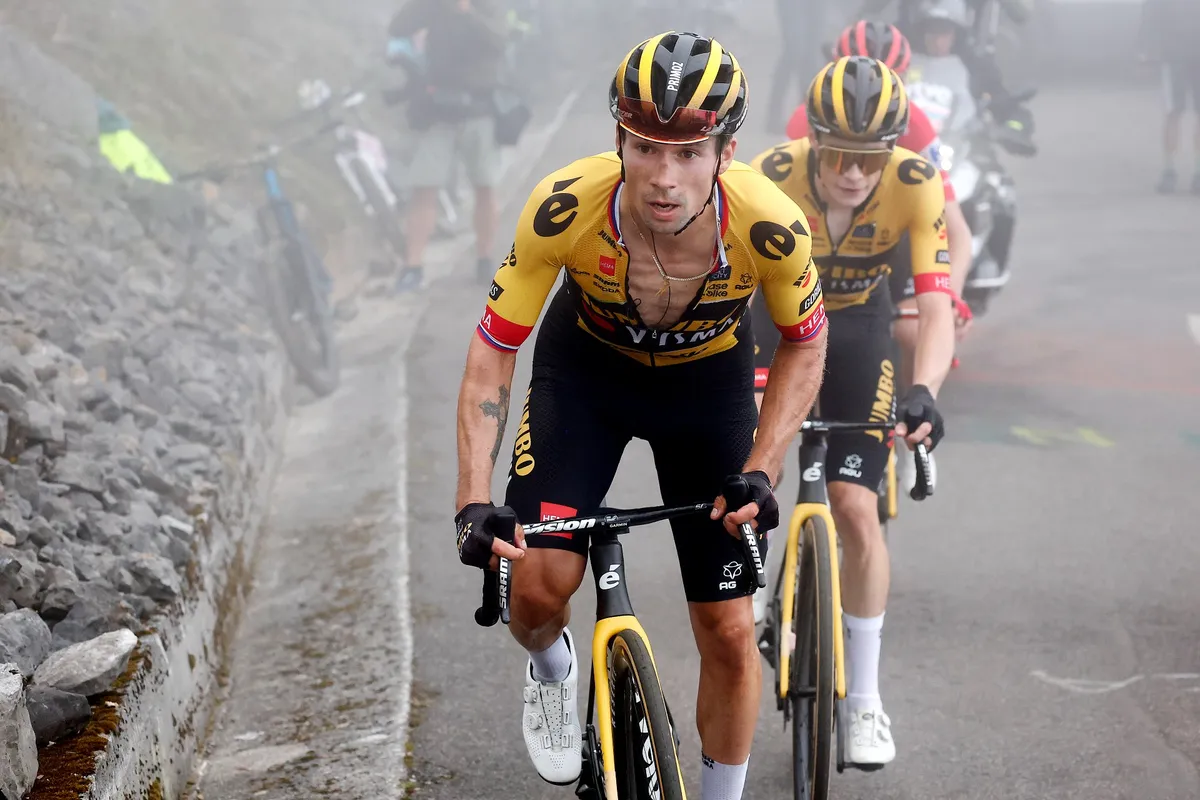
With three kilometres to go, it’s here that I was forced to dismount; it was either walk or snap my knees.
Reaching 24 per cent at its peak but spending far too long above 20 per cent, this is where the Angliru seals its reputation.
Following on, there are more hard ramps, but shorter, so allowing better recovery, and then the final kilometre is all but flat to allow you to compose yourself and arrive triumphant at the summit.
- Simon Warren's rating: 10/10
- Length: 12.5km
- Summit altitude: 1,570m
- Height gain: 1,248m
- Maximum gradient: 24%
- Average gradient: 9.9%
2) Sa Calobra, Mallorca

Perfect. Utterly perfect. Well, almost.
The first tip for riding Sa Calobra is to get there early, especially if it’s your intention to put down a fast time, because by mid-morning the coaches will be starting to arrive, ferrying tourists to the fishing village at the bottom.
Blocking the hairpins and polluting the air, they are annoying, but without them and the visitors they carry, we would not have what is regarded by many as the ultimate cycling climb.
Just shy of 10 kilometres long, this magnificent tangle of tarmac twists its way from shore to sky through the simply exquisite rocky landscape.
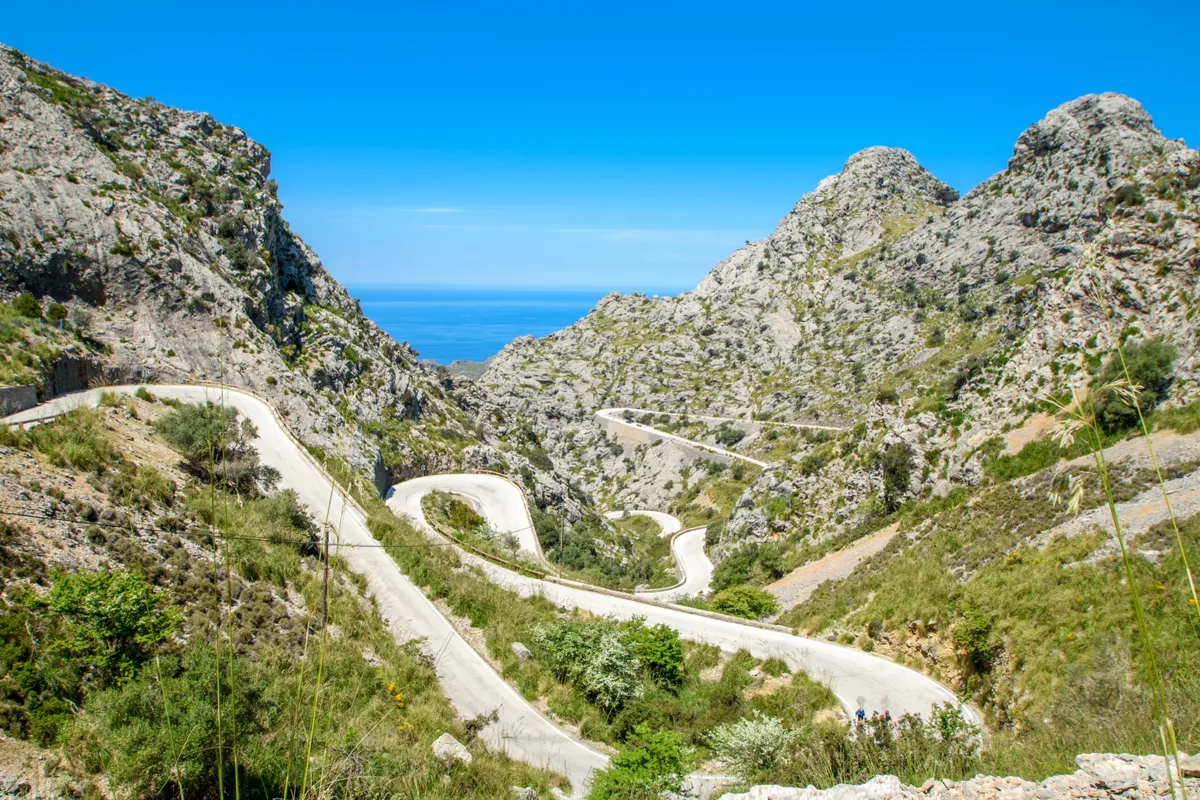
To ride it you must, of course, descend first, so on your way down you can marvel at its beauty and the genius of its construction. Then, after arriving at the base, turn right round and smash it back up.
Almost faultless from start to finish, there are two more features, one natural and one man-made, that embellish the road even further.
First, after two kilometres, you come to the famous narrowing as the road squeezes between two giant rock faces. Then, within a kilometre of the summit, you reach the 360-degree corner where the road loops round and passes over itself before the final push for the summit, which, to be geographically correct, is the Coll dels Reis.
Enjoy!
- Simon Warren's rating: 6/10
- Length: 9.7km
- Summit altitude: 723m
- Height gain: 667m
- Maximum gradient: 11%
- Average gradient: 6.9%
3) Alto del Gamoniteiro, Northern Spain
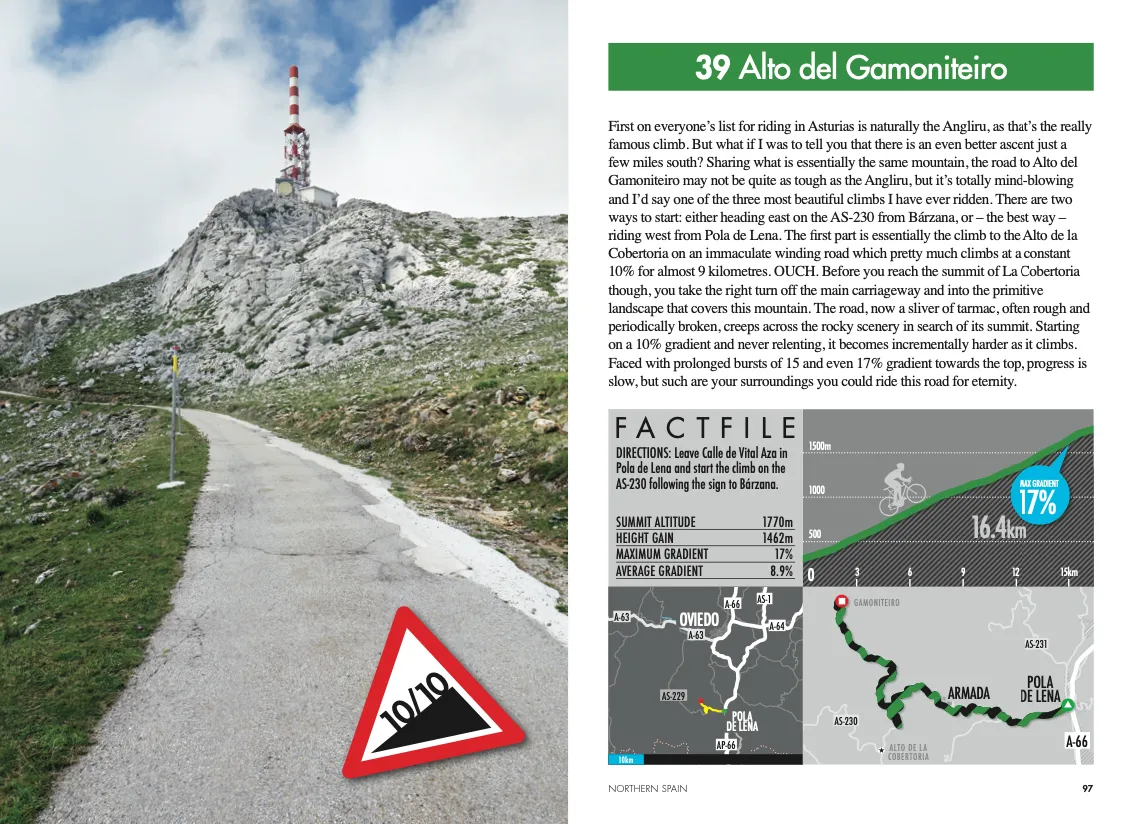
First on everyone’s list for riding in Asturias is naturally the Angliru, as that’s the really famous climb. But what if I was to tell you that there is an even better ascent just a few miles south?
Sharing what is essentially the same mountain, the road to Alto del Gamoniteiro may not be quite as tough as the Angliru, but it’s totally mind-blowing and I’d say one of the three most beautiful climbs I have ever ridden.
There are two ways to start: either heading east on the AS-230 from Bárzana, or – the best way – riding west from Pola de Lena. The first part is essentially the climb to the Alto de la Cobertoria on an immaculate winding road, which pretty much climbs at a constant 10 per cent for almost nine kilometres. OUCH.
Before you reach the summit of La Cobertoria though, you take the right turn off the main carriageway and into the primitive landscape that covers this mountain. The road, now a sliver of tarmac, often rough and periodically broken, creeps across the rocky scenery in search of its summit.
Starting on a 10 per cent gradient and never relenting, it becomes incrementally harder as it climbs. Faced with prolonged bursts of 15 and even 17 per cent gradient towards the top, progress is slow, but such are your surroundings you could ride this road for eternity.
- Simon Warren's rating: 10/10
- Length: 16.4km
- Summit altitude: 1,683m
- Height gain: 1,293m
- Maximum gradient: 11%
- Average gradient: 4.6%
4) La Bola del Mundo, Sistema Central
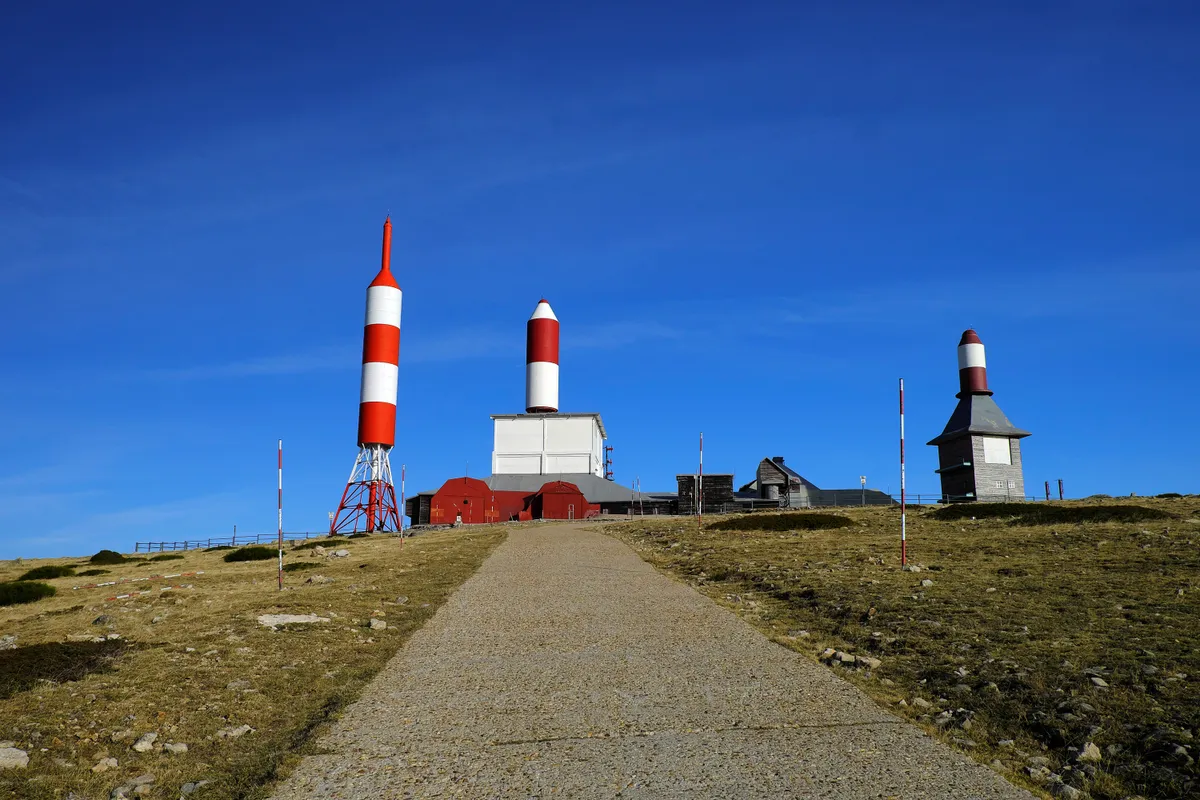
This road had been right at the top of my bucket list from the very first time I saw it on TV. It’s pure Vuelta madness.
Three kilometres of ruthless concrete track that picks its way almost to the very summit of the Sierra de Guadarrama. The lunacy starts at the top of the Puerto de Navacerrada, where you pull off the main road, ride through a jumble of buildings then kiss your saddle goodbye.
On a surface of gravel-strewn ribbed concrete, you begin to grind upwards on the near-20 per cent slope across the barren landscape for almost a kilometre before the incline eases for a while.

Traversing the edge of the mountain, this maniacal road then thrashes back and forth, mercilessly steep through five tight bends that will have you fighting for both forward motion and traction.
Now at well over 2,000 metres altitude, after a long straight you are faced with another brace of bends: this is the last time for any relaxation before the push for the summit.
The final 500 metres to the Alto de las Guarramillas, or La Bola del Mundo, are an all-out assault on your body. Relentlessly tough, and brutally rough and debris-covered, they place you centre stage in a draw-dropping panorama as you crawl to the giant towers that mark the summit of this, a must-ride 100 per cent Vuelta classic.
- Simon Warren's rating: 10/10
- Length: 3.1km
- Summit altitude: 2,257m
- Height gain: 385m
- Maximum gradient: 24%
- Average gradient: 12.4%
5) Roque de los Muchachos, La Palma
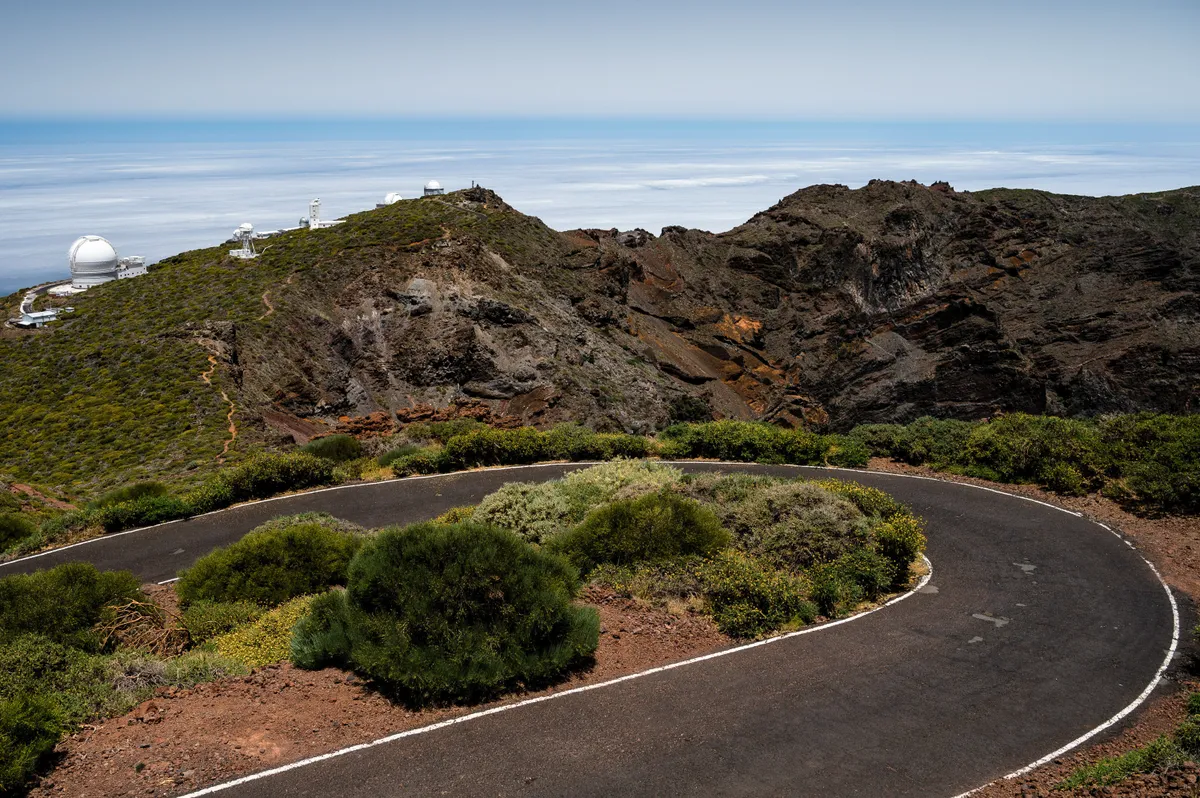
This is the most mind-blowing climb I have ever ridden – and that includes the Pico Veleta.
Forget Teide, that’s just a lump, a mere blip. If you want altitude, if you really want an out-of-this-world island experience, then you NEED to ride the Roque de los Muchachos.
Leaving Santa Cruz de la Palma, there was moisture in the air as I began the giant ascent through the forest, but after 1,500 metres of vertical gain, the damp and grey were gone because I was now above the clouds. From here on, past the treeline, I entered a world beyond imagination above a sea of white that stretched far to the horizon.
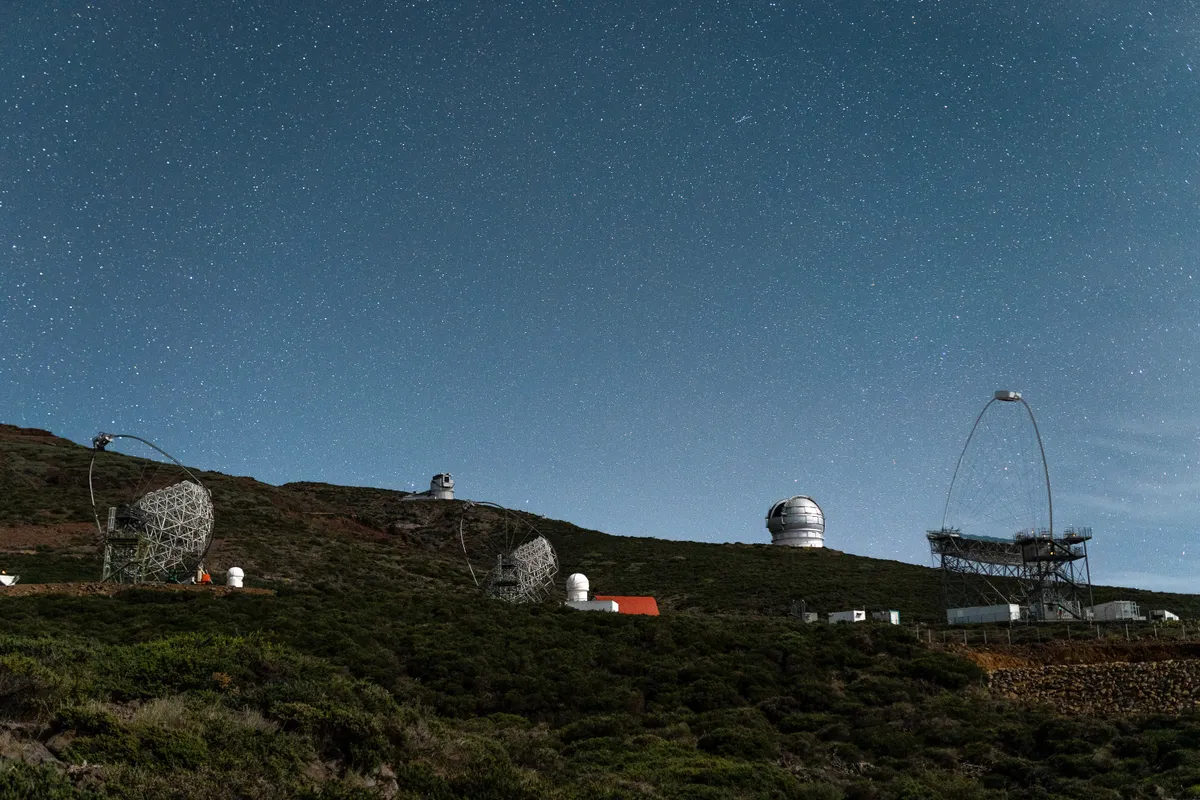
Crossing the harsh, sparsely vegetated volcanic landscape, with pure blue sky overhead and an ocean of fluffy cloud below, was simply unreal.
At 35 kilometres in, you reach an intermediate summit at the Mirador de los Andenes, where, if you like, you can take a break to check out the Caldera de Taburiente before pressing on.
Next, there is a three-kilometre descent before the astonishing finale. Home to a myriad of astronomical observatories, the mountaintop looks like the set of a 1980s Bond movie, and, taking the left turn, you wind up the final four kilometres between the huge galactic listening devices until you reach the car park at the top of the world.
BEYOND EPIC.
- Simon Warren's rating: 11/10
- Length: 41.5km
- Summit altitude: 2,426m
- Height gain: 2,422m
- Maximum gradient: 15%
- Average gradient: 5.7%
6) Pico Veleta, Andalucia
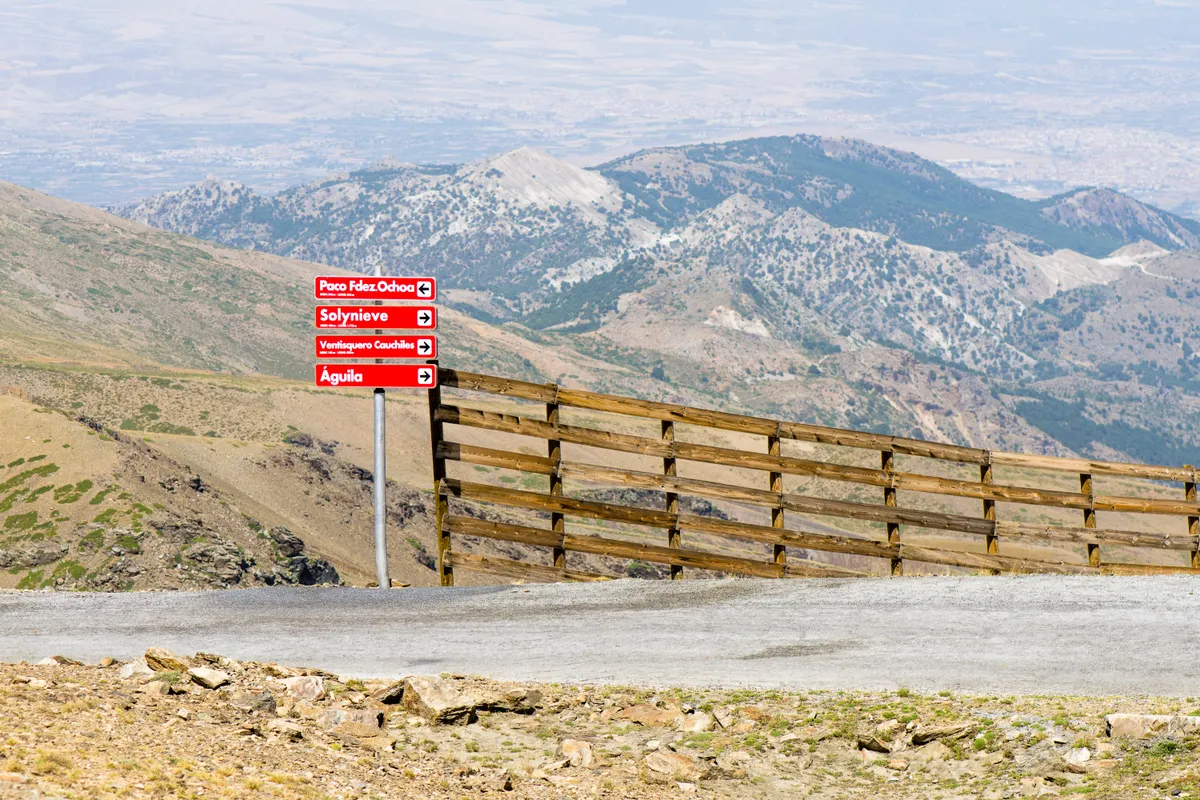
Why do billionaires spend all that money building rockets to reach ‘nearly space’ when all they actually need to do is get on their bikes?
The previous high point I had cycled to was the Cime de la Bonette, at 2,860 metres. The Pico Veleta stands 515 metres above that, and it is quite frankly OUT OF THIS WORLD.
There are many combinations of roads to begin the ascent; I chose to ride from Pinos Genil up to join the A-395, used this for a while, then turned onto the A-4025, the quieter (and steeper) back road.
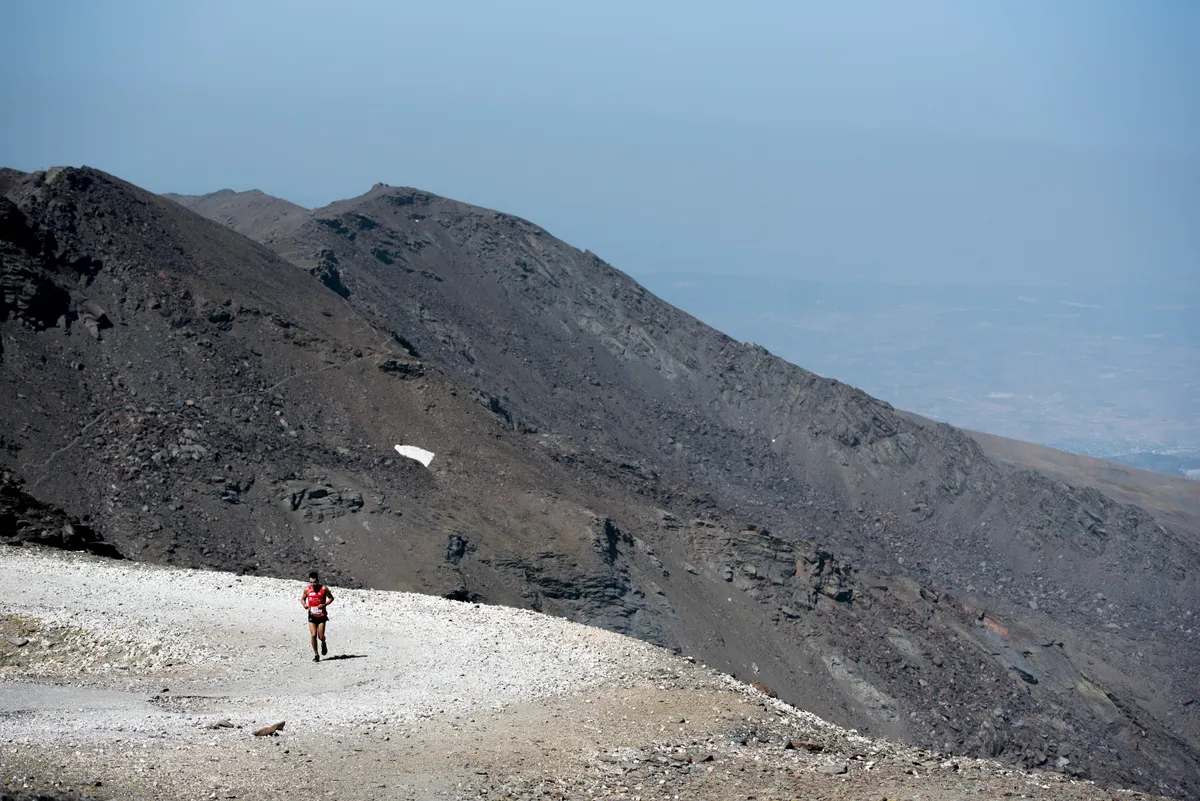
After this, I rejoined the wider carriageway up to Alto Hoya de la Mora, where at 2,500 metres the air is already thin; it’s here you begin the extraordinary adventure to the summit.
Traversing the desolate landscape, you climb through endless switchbacks high above the world below, and as you do the road begins to falter. Before long, cracks start to appear in the once-smooth tarmac. These cracks turn to holes, then patches of broken surface, then with a couple of kilometres to go, it turns to horrendous gravel.
On 25-millimetre tyres, it became all but impossible to ride, and with 500 metres to go, I had to throw in the towel. Once I’d stopped, I looked out across the curvature of the Earth, then down at the two wheels that had carried me to this point, and just shook my head in disbelief.
- Simon Warren's rating: 11/10
- Length: 40.2km
- Summit altitude: 3,375m
- Height gain: 2,608m
- Maximum gradient: 14%
- Average gradient: 6.5%
